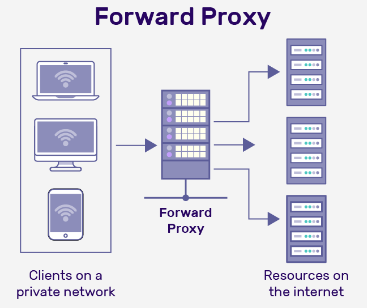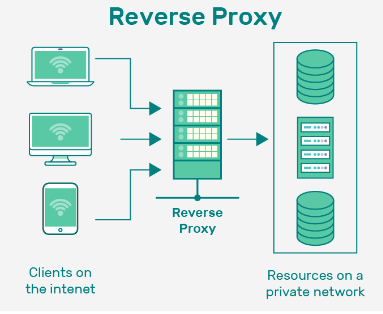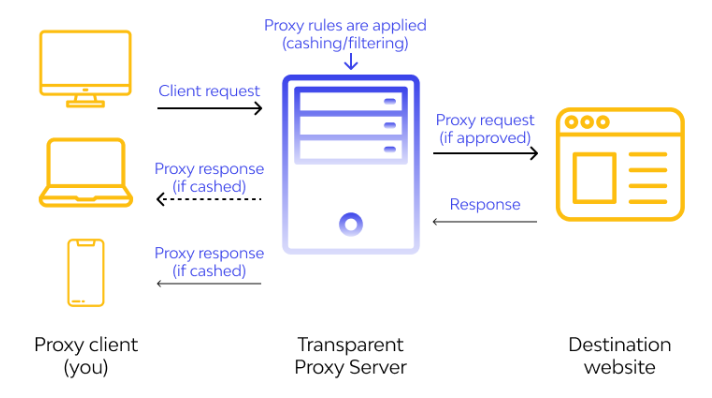Proxy Servers
Overview
A proxy server acts as an intermediary between a client and the internet.
- Allows clients to make requests to servers while hiding their IP addresses.
- Receives client requests, sends to the server, then returns server responses.
- Cache content to improve load times and reduce bandwidth usage.
- Filter web traffic to enforce organizational policies.
- Implement user authentication protocols and secure tunnels
Types of Proxy
Circuit Level Proxy
A circuit-level proxy establishes and manages connections between networks, focusing on the session rather than individual packets.
- Like a SOCKS firewall
- Operate at Layer 5 (Session layer)
Circuit-level proxies make use of the SOCKS version 5 protocol, which is a lightweight, general-purpose protocol that routes traffic between a client and server without inspecting the actual data.
Application Level Proxy
An application-level proxy filters traffic based on the specific applications being used, offering detailed control over data exchanges.
- Deeper packet inspection
- Conducts various proxy functions for each type of application
- Best positioned inside the network
- As closely as possible to the application server
Kernel Proxy
A kernel proxy efficiently processes and filters traffic at a deep level, suitable for high-speed environments.
- Known as a "5th Generation Firewall"
- Minimal impact on network performance
- Thoroughly inspects packets across all layers
- Uses the operating system's kernel to process and filter packets
- Often used in high-throughput environments requiring granular control and speed
- Best positioned as close as possible to the application server
Functionality
Forward Proxy
A forward proxy acts as an intermediary that sits between clients and the external servers. It forwards client requests to the internet and returns the server's response to the client.
- Hides IP address of internal client station.
- After internet content is fetched, the content can be cached on the proxy.
- Cached content speeds up subsequent requests.
Direction:
Client -> Forward Proxy -> Internet -> Server
Sample diagram from Security Boulevard:

Reverse Proxy
A reverse proxy sits in front of one or more servers and forwards client requests to the appropriate server. The client interacts with the reverse proxy as if it were the server.
- Protecting the servers, not the client devices, thereby hiding the identity of the server.
- Proxy server is configured with a public IP address and a port number.
- Can support loadbalancing and SSL/TLS offloading or termination.
Direction:
Client -> Reverse Proxy -> Internal Network -> Server(s)
Sample diagram from Security Boulevard:

Transparent Proxy
A transparent proxy, also known as an intercepting proxy, inline proxy, or forced proxy, is a type of forward proxy that intercepts and redirects client requests without requiring any client-side configuration or awareness.
- Internal clients point to proxy server's IP address as their default gateway.
- You can have proxy configurations on an actual router or server.
Sample diagram from Wallarm:
